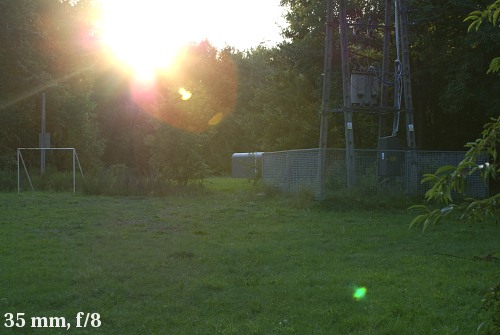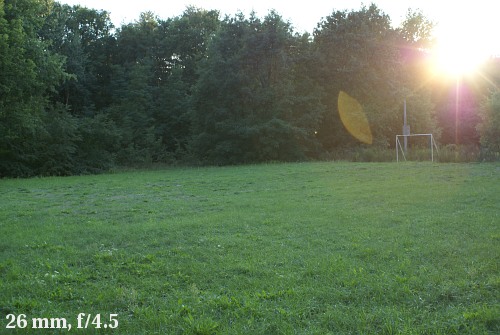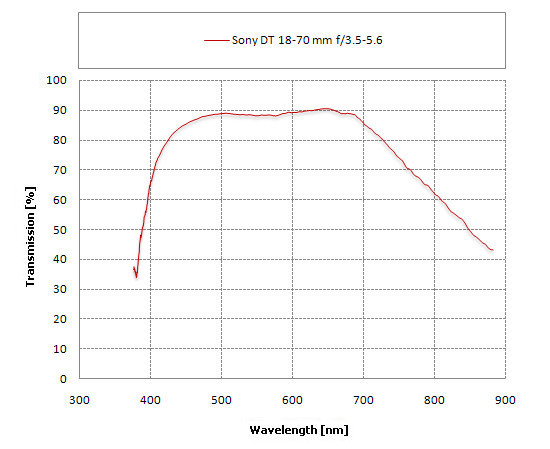Sony DT 18-70 mm f/3.5-5.6
9. Ghosting, flares and transmission
 |
 |
Please Support UsIf you enjoy our reviews and articles, and you want us to continue our work please, support our website by donating through PayPal. The funds are going to be used for paying our editorial team, renting servers, and equipping our testing studio; only that way we will be able to continue providing you interesting content for free. |
- - - - - - - - - - - - - - - - - - - - - - - - - - - - - - - - - - - - - - - - - - - - - - - -
The lens fares well in this category partially because of anti-reflection coatings, quite good for this class of equipment. The transmission graph, presented below, provides more info about their performance.
 |
We like the flat graph, reaching near 90% in the 470-700 nm range. It means the lens doesn’t lose much light and the colour rendition is quite natural. You can express some reservations only about the part near the purple light, where the transmission decreases to about 70%. It should be kept in mind, though, that in order to get the transmission level of nearly 90% in a device with 9 groups of elements, so having as many as 18 air-to-glass surfaces to cover, the light loss on one surface must be minimized to circa 0.6%. For this price segment such a level seems to be very decent indeed.






